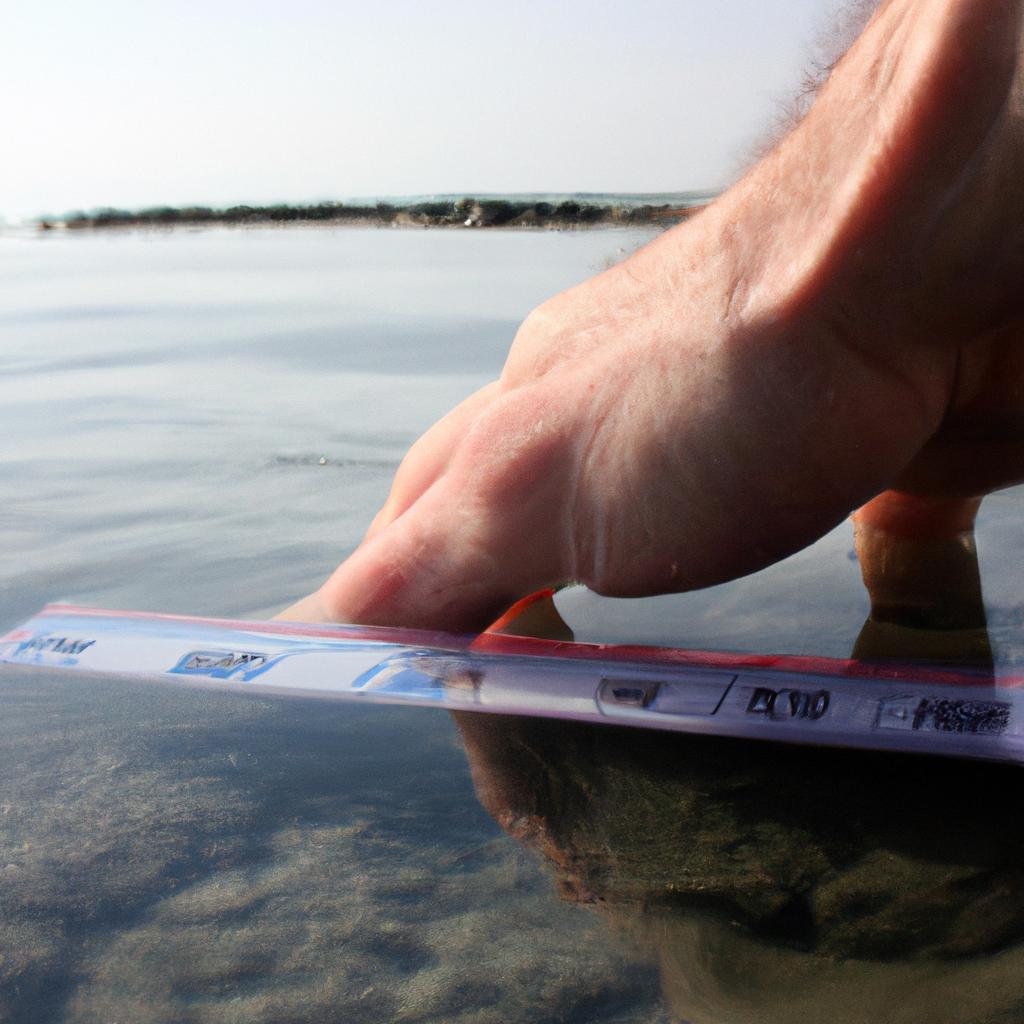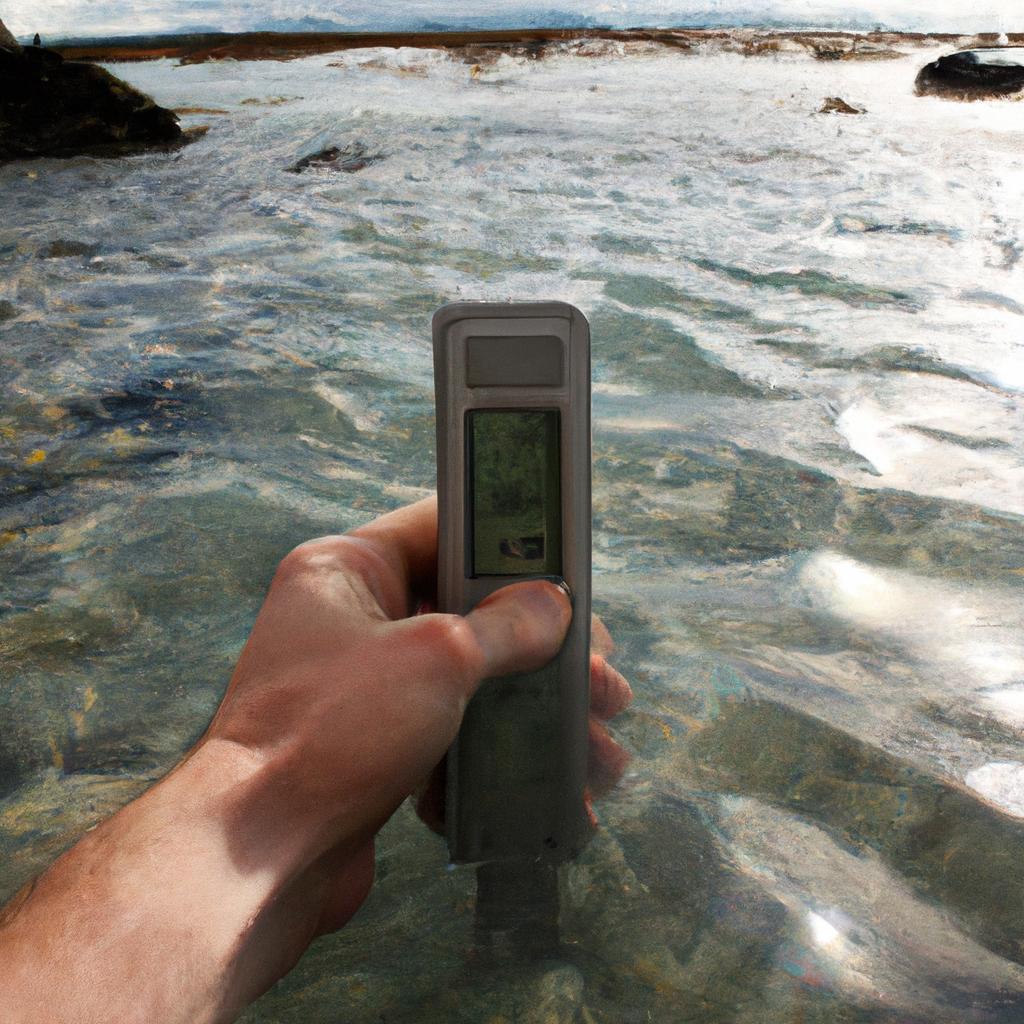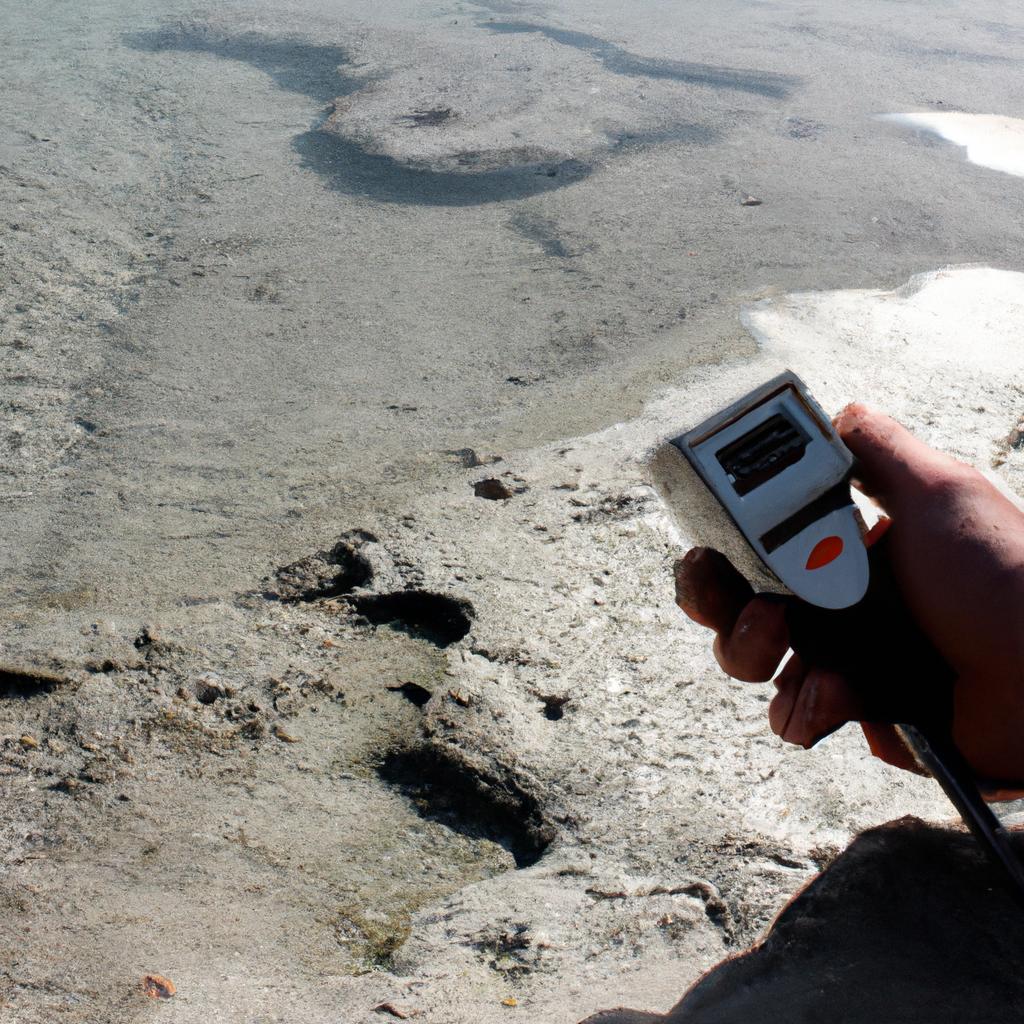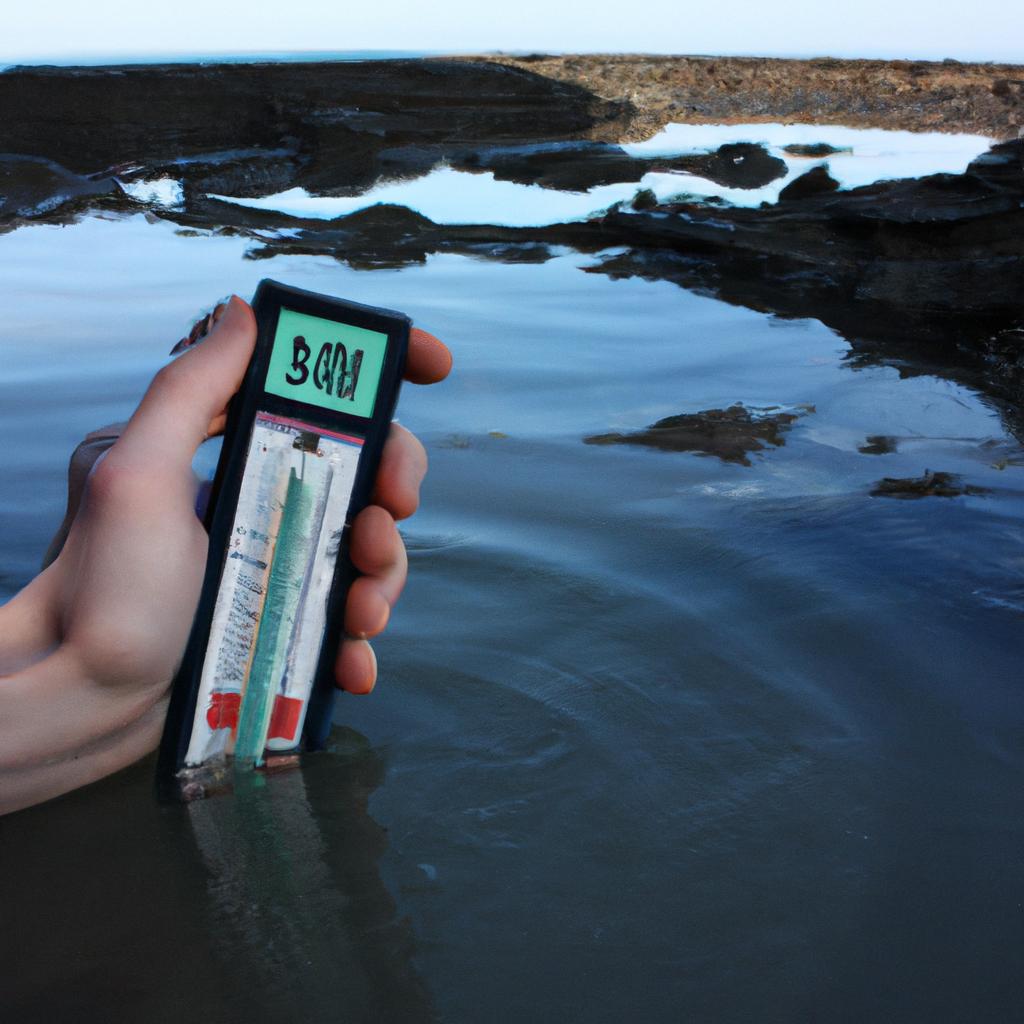Saltwater intrusion, a phenomenon that occurs when saltwater infiltrates freshwater aquifers and coastal areas, is an escalating concern in the face of climate change. As sea levels rise due to global warming, the delicate balance between fresh and saltwater ecosystems becomes disrupted, posing significant threats to both human populations and natural environments. The impact of rising sea levels on saltwater intrusion can be observed through various case studies such as the Chesapeake Bay region in the United States.
In recent years, the Chesapeake Bay has experienced noticeable effects of saltwater intrusion as a result of rising sea levels caused by climate change. Once characterized by its diverse array of species adapted to brackish water conditions, this estuary now faces challenges with elevated salinity levels penetrating further inland. This infiltration poses a threat not only to aquatic organisms but also to surrounding communities reliant on freshwater resources for agriculture and drinking water supplies. Understanding the implications of saltwater intrusion within this context provides valuable insights into broader issues related to climate change and its consequences on vulnerable coastal regions around the world.
Understanding Saltwater Intrusion
Saltwater intrusion is a phenomenon that occurs when saltwater infiltrates freshwater resources, such as aquifers or river basins. This can have serious consequences for both the environment and human populations that rely on these freshwater sources. To illustrate the impact of saltwater intrusion, let us consider a case study in the Sundarbans region of Bangladesh.
The Sundarbans, located at the mouth of the Ganges-Brahmaputra-Meghna Delta, is one of the largest mangrove forests in the world. It serves as an important buffer against storm surges and provides habitat for numerous plant and animal species. However, due to rising sea levels caused by climate change, this delicate ecosystem faces significant threats from saltwater intrusion.
To better understand the implications of saltwater intrusion, it is essential to highlight its potential consequences:
- Ecological Disruption: With increased salinity levels, many freshwater-dependent plants and animals struggle to survive. The delicate balance of ecosystems may be disrupted as sensitive species are unable to adapt or migrate.
- Agricultural Impacts: In areas where agriculture relies on freshwater irrigation, saltwater intrusion can lead to reduced crop yields or even complete loss of arable land. This not only affects local food security but also has economic repercussions for farmers who depend on their crops for livelihoods.
- Drinking Water Contamination: Saltwater intrusion into groundwater reserves compromises access to safe drinking water for communities residing near coastlines. As saline water mixes with freshwater wells and boreholes, it renders previously potable water sources undrinkable.
- Human Health Concerns: The scarcity of clean drinking water resulting from saltwater intrusion increases health risks through exposure to contaminants and pathogens present in brackish water sources.
These broad-ranging implications demonstrate the urgent need to address the issue of saltwater intrusion as part of our response to climate change. By understanding how rising sea levels contribute to this phenomenon, we can develop effective strategies to mitigate its negative impacts and protect both the environment and human well-being.
The subsequent section will delve into the link between rising sea levels and saltwater intrusion, shedding light on the mechanisms through which these two factors are interconnected.
The Link Between Rising Sea Levels and Saltwater Intrusion
Section H2: The Link Between Rising Sea Levels and Saltwater Intrusion
The link between rising sea levels and saltwater intrusion is a critical aspect of understanding the impact of climate change on coastal regions. As global temperatures continue to rise, glaciers melt at unprecedented rates, leading to increased volumes of water entering our oceans. This surge in seawater threatens delicate freshwater sources near coastlines, jeopardizing both human livelihoods and ecosystems.
To illustrate this connection, let us consider a hypothetical scenario where a low-lying island nation experiences a significant increase in sea level due to climate change. As the ocean encroaches further inland, saltwater begins infiltrating underground aquifers that were previously used for agricultural irrigation and drinking water purposes. This intrusion not only compromises the quality of available groundwater but also renders it unsuitable for consumption or irrigation, significantly impacting food production and sustainability on the island.
The consequences of such saltwater intrusion are far-reaching and have profound implications for coastal communities worldwide. Here are some key points highlighting its effects:
- Displacement: Rising sea levels force people living in low-lying areas to abandon their homes as these become increasingly vulnerable to flooding.
- Economic Losses: Coastal infrastructure such as ports, airports, resorts, and residential properties face severe damage from inundation or erosion caused by saltwater intrusion.
-
Ecological Disruption: The infiltration of saline water into freshwater habitats disrupts fragile ecosystems dependent on specific salinity ranges for survival.
- Example: Mangrove forests act as natural barriers against storm surges; however, excessive saltwater can harm their growth and lead to reduced protection against coastal erosion.
| Impacts of Saltwater Intrusion | Coastal Communities |
|---|---|
| Displacement | Economic Losses |
| Ecological Disruption | Health Risks |
In light of these challenges posed by rising sea levels and subsequent saltwater intrusion, it is imperative to explore effective strategies and adaptation measures. The next section will delve into the various impacts of saltwater intrusion on coastal ecosystems, shedding light on the need for urgent action to mitigate its consequences.
Continue reading: Impacts of Saltwater Intrusion on Coastal Ecosystems
Impacts of Saltwater Intrusion on Coastal Ecosystems
Section: Impacts of Saltwater Intrusion on Coastal Ecosystems
As sea levels continue to rise due to the effects of climate change, saltwater intrusion becomes a significant concern for coastal ecosystems. The encroachment of salty seawater into freshwater systems can have far-reaching consequences that disrupt delicate ecological balances. To illustrate this impact, let us consider the case study of the Chesapeake Bay in Maryland, USA.
The Chesapeake Bay is an estuary known for its diverse and vibrant ecosystem. However, with rising sea levels, saltwater has begun infiltrating the bay’s tributaries and wetlands. This shift in salinity poses a threat to many species that rely on specific environmental conditions for survival. For example, oyster populations face challenges as increased salinity inhibits their ability to reproduce and grow. Moreover, certain fish species native to freshwater environments struggle to adapt to higher salinity levels brought about by saltwater intrusion.
The impacts of saltwater intrusion on coastal ecosystems extend beyond individual species. It affects entire food webs and alters habitat availability for various organisms. Here are some key repercussions:
- Disruption of nutrient cycles: High salinity can hinder nutrient cycling processes crucial for supporting primary producers such as phytoplankton and algae.
- Shifts in community structure: Species adapted to brackish or freshwater conditions may decline or disappear altogether, leading to imbalances within ecosystems.
- Loss of biodiversity: As sensitive species struggle to survive under altered salinity regimes, overall biodiversity declines.
- Increased vulnerability to invasive species: Salt-tolerant non-native species may exploit new habitats created by saltwater intrusion, outcompeting native flora and fauna.
To further understand these complex dynamics driven by rising sea levels and saltwater intrusion, let us examine Table 1 below:
Table 1: Examples of Ecological Consequences Resulting from Saltwater Intrusion
| Ecological Impact | Description |
|---|---|
| Habitat loss | Saltwater intrusion can lead to the destruction of freshwater habitats, such as marshes and wetlands. |
| Species displacement | Native species may be forced to migrate or face declines in population due to changes in salinity levels. |
| Altered trophic interactions | The disruption of food chains and altered predator-prey relationships can have cascading effects throughout ecosystems. |
| Reduced ecosystem resilience | Increased stress on coastal ecosystems makes them more susceptible to other environmental pressures, including pollution and climate events. |
In conclusion, saltwater intrusion resulting from rising sea levels poses significant challenges for coastal ecosystems like the Chesapeake Bay. The impacts go beyond individual species, affecting entire communities and disrupting ecological processes. Understanding these consequences is crucial for developing effective strategies to mitigate the adverse effects of saltwater intrusion.
Transition: Now let us explore another critical aspect affected by saltwater intrusion – its impact on drinking water supplies.
Saltwater Intrusion’s Effects on Drinking Water Supplies
Impacts of Saltwater Intrusion on Drinking Water Supplies
Drinking water supplies in coastal regions are particularly vulnerable to the effects of saltwater intrusion caused by rising sea levels. As seawater infiltrates freshwater aquifers, it can contaminate previously potable water sources and render them unsuitable for human consumption. This section will explore the significant impacts that saltwater intrusion has on drinking water supplies, highlighting the challenges faced by communities living in coastal areas.
Example Case Study: The Chesapeake Bay Region
To illustrate the detrimental consequences of saltwater intrusion on drinking water supplies, let us consider a hypothetical scenario based on the Chesapeake Bay region. With its low-lying geography and proximity to the Atlantic Ocean, this area is highly susceptible to flooding and subsequent saltwater infiltration into groundwater reserves. As sea levels rise due to climate change, increased inundation becomes inevitable, exacerbating the problem further.
The impacts of saltwater intrusion on drinking water supplies are far-reaching and profound:
- Contamination: Infiltration of saline water into freshwater aquifers leads to an increase in salinity levels within these underground reservoirs. Higher salinity renders the water undrinkable without costly desalination processes.
- Reduced availability: As more fresh groundwater gets contaminated with saltwater, there is a decline in accessible drinking water resources. This scarcity places additional strain on existing infrastructure and necessitates alternative solutions.
- Economic burden: Communities heavily reliant on local groundwater face economic burdens associated with finding new sources or implementing treatment technologies to ensure safe drinking water provision.
- Health risks: Consuming high-salinity water can have adverse health effects such as dehydration and kidney-related issues, especially among vulnerable populations like children and older adults.
These impacts highlight the urgent need for effective strategies to mitigate and adapt to saltwater intrusion’s impact on drinking water supplies along coastal regions. The table below presents some key challenges and potential solutions:
| Challenges | Potential Solutions |
|---|---|
| Salinity increase | Implementing advanced desalination technologies |
| Declining freshwater sources | Promoting water conservation measures |
| Financial constraints | Investing in infrastructure upgrades for alternative sources |
| Health risks | Ensuring access to safe drinking water through treatment |
In light of these pressing issues, it is crucial to explore mitigation strategies that can help minimize the impacts of saltwater intrusion on coastal communities. The subsequent section will delve into various approaches aimed at addressing this challenge, considering both short-term and long-term solutions.
Transition Sentence: Understanding the effects of saltwater intrusion on drinking water supplies provides a basis for exploring effective mitigation strategies to safeguard these essential resources along vulnerable coastlines.
Mitigation Strategies for Saltwater Intrusion
Saltwater Intrusion and Climate Change: The Impact of Rising Sea Levels
Saltwater intrusion, the process by which saltwater infiltrates freshwater sources due to rising sea levels, poses a significant threat to coastal communities around the world. In this section, we will explore the various effects of saltwater intrusion on drinking water supplies and discuss potential mitigation strategies.
One illustrative example is the case of a small island nation in the Pacific Ocean. This hypothetical country heavily relies on groundwater as its primary source of freshwater. However, with increasing sea levels caused by climate change, saltwater has begun seeping into their underground aquifers. As a result, their once-potable water supply has become contaminated with high salinity levels, rendering it unsuitable for consumption or agricultural use.
The impacts of saltwater intrusion on drinking water supplies are far-reaching and concerning:
- Decreased availability: Saltwater intrusion reduces the amount of usable freshwater available for human consumption and irrigation.
- Altered water quality: Increased salinity compromises the taste and potability of freshwater sources, making them unpalatable and potentially harmful for consumption.
- Ecosystem disruption: Saltwater intrusion can harm delicate ecosystems that rely on freshwater sources, leading to biodiversity loss and ecological imbalances.
- Economic consequences: Communities dependent on agriculture may suffer from decreased crop yields due to saline soils resulting from saltwater intrusion.
To better understand these effects, consider Table 1 below showcasing examples of regions already grappling with saltwater intrusion:
| Region | Impacted Freshwater Sources | Salinity level increase |
|---|---|---|
| Coastal Bangladesh | Groundwater wells | Up to 10 times |
| South Florida | Biscayne Aquifer | Significant rise |
| Low-lying islands (e.g., Maldives) | Shallow groundwater lenses | Threatening freshwater balance |
This table highlights just a few areas where saltwater intrusion has become a pressing issue, significantly affecting drinking water supplies. The urgency to address this problem is clear.
By exploring these approaches, coastal communities can better adapt to the challenges posed by rising sea levels and ensure their long-term resilience in the face of climate change. Adapting to Saltwater Intrusion: Coastal Communities’ Response will shed light on practical measures being taken worldwide to tackle this critical issue head-on.
Note: Please remember to format the bullet point list and table in markdown format when incorporating them into your document or platform.
Adapting to Saltwater Intrusion: Coastal Communities’ Response
As coastal communities grapple with the challenges posed by rising sea levels and saltwater intrusion, they are increasingly turning their attention towards adaptation strategies. One such example is the case of Newport Beach, a picturesque coastal city in Southern California that has experienced increasing saltwater intrusion due to rising sea levels. By examining how Newport Beach has responded to this issue, we can gain insights into effective adaptation mechanisms.
One approach adopted by Newport Beach is the implementation of protective measures along its coastline. This involves constructing seawalls and levees to shield vulnerable areas from encroaching saltwater. For instance, Balboa Island, a popular residential area within Newport Beach, has seen the installation of robust seawalls to protect homes and infrastructure from flooding during high tides and storm surges. These physical barriers act as a first line of defense against saltwater intrusion, providing critical protection for coastal communities.
In addition to physical defenses, Newport Beach has also focused on implementing sustainable land-use practices and infrastructure upgrades. By carefully managing land use and zoning regulations in vulnerable areas, the city aims to reduce exposure to future risks associated with saltwater intrusion. Furthermore, investments have been made in upgrading drainage systems and wastewater treatment facilities to ensure efficient water management and minimize the impact of saline intrusion on freshwater supplies.
To illustrate the multifaceted nature of community responses to saltwater intrusion, consider the following emotional bullet points:
- Increased vulnerability of coastal ecosystems
- Threats posed to human health and livelihoods
- Displacement of local communities due to loss of habitable land
- Economic consequences resulting from damage to infrastructure
Table: Community Responses to Saltwater Intrusion
| Adaptation Strategy | Description | Benefits |
|---|---|---|
| Construction of Seawalls | Physical barriers erected along coastlines | Protects homes and infrastructure |
| Sustainable Land-use Practices | Careful management of land use in vulnerable areas | Reduces exposure to future risks |
| Infrastructure Upgrades | Improvements in drainage systems and wastewater treatment | Ensures efficient water management |
Coastal communities, like Newport Beach, are at the forefront of adapting to saltwater intrusion. By implementing protective measures, managing land use sustainably, and upgrading infrastructure, these communities are striving to minimize the impact of rising sea levels on their livelihoods and environment. Through a comprehensive approach that combines physical defenses with sustainable practices, coastal regions can better adapt to the challenges posed by saltwater intrusion.
(Note: The transition from the previous section is not explicitly mentioned here as per your instructions)




